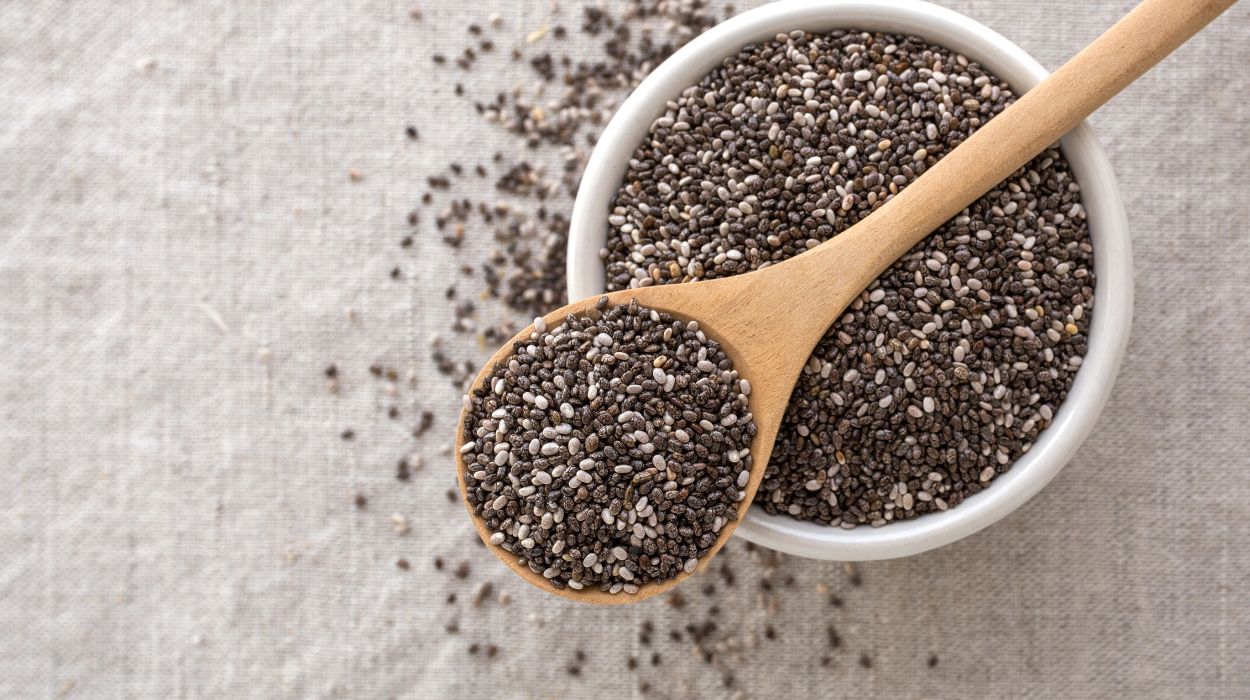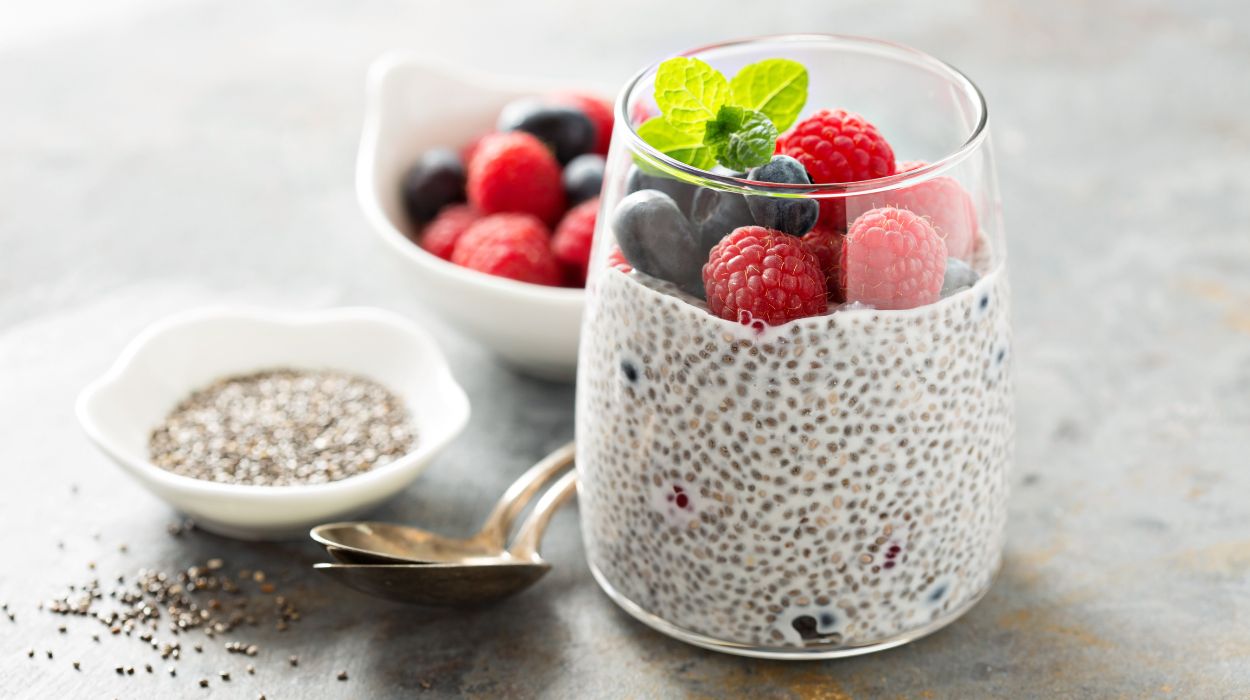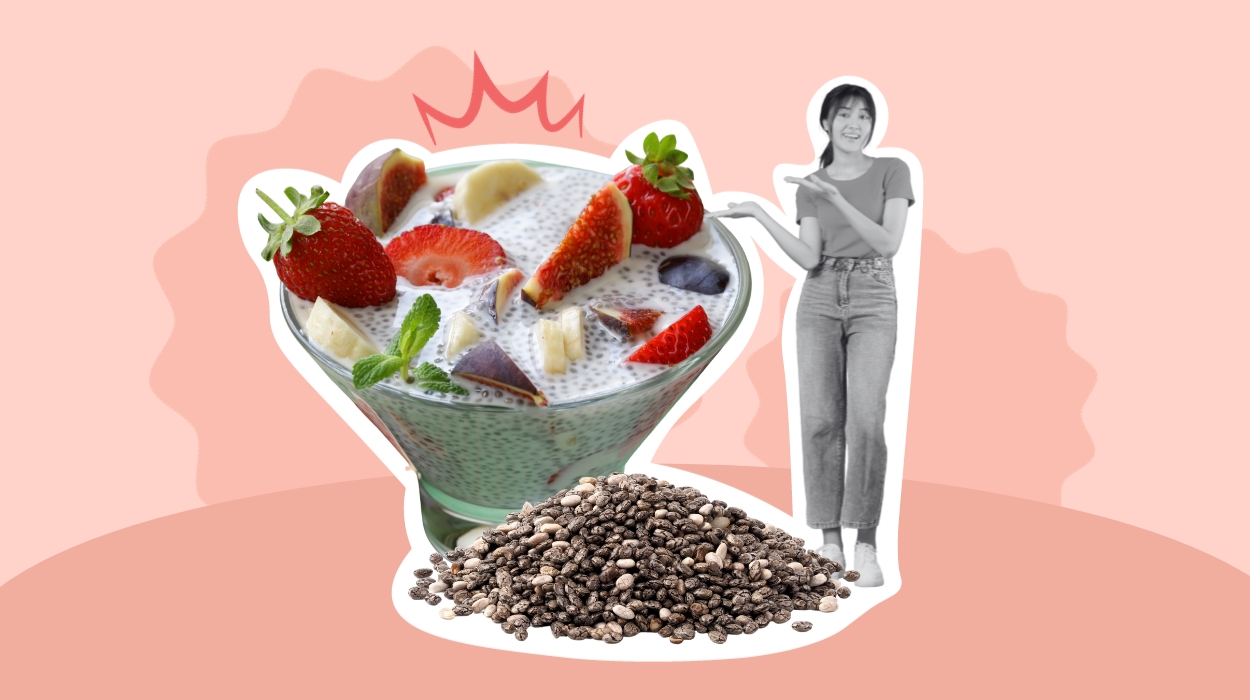Chia seeds are the hidden gem of nutrition and can be the perfect healthy breakfast or snack. They may be relatively new in popularity within the United States, however, they have been around since 3500 B.C. and were used in Aztec religious ceremonies.[1] Chia seeds are a complete protein[2] (they contain all nine essential amino acids not made by the body) and are free of gluten.
They are jam-packed with nutrients such as omega-3 fatty acids which have been shown to reduce cardiovascular disease[3] and contain healthy amounts of minerals, antioxidants, and fiber, while lacking trans fat and saturated fat. Chia pudding can be easily customized to your flavor preferences, dietary restrictions, and lifestyle. Resulting in it becoming one of the best healthy snacks to make for all types of diet plans. Discover more about how to make chia seed pudding here.
How To Make Chia Seed Pudding Recipe?
Follow these easy steps for a healthy snack or perfect healthy breakfast:
- Prepare the ingredients
- Mix the ingredients apart from the chia seeds
- Add chia seeds to the mixture
- Store overnight in the refrigerator
- Add more toppings and enjoy the chia seed pudding
How To Make Chia Seed Pudding?
In order to make the best chia pudding recipe that results in a creamy pudding, one must first have an 8 oz airtight container (mason jar) ready. Then follow these easy steps for a healthy snack or perfect healthy breakfast:
Prepare The Ingredients
The first step in making chia seed pudding is figuring out all of the great ingredients you would like to add and combining them into something that will be delicious while nourishing your body. The chia pudding recipe ingredients are very simple and make meal prep chia pudding a breeze using any basic recipe. Having mason jars available is also very helpful.
The ingredients for a great chia seed pudding recipe are as follows:
- 3 teaspoons of chia seeds
- 1 teaspoon vanilla extract
- ¾ cup unsweetened almond milk or coconut milk
- 1 teaspoon of honey or pure maple syrup
Mix The Ingredients Apart From The Chia Seeds
The next step is to add the ingredients into the mason jar:
- Add milk (almond milk or light coconut milk)
- Add pure maple syrup and pure vanilla extract
- Whisking all of the ingredients together until they are smooth.
Some of the most popular recipes also combine cacao powder, maple syrup, cinnamon, salt, vanilla, and dairy-free beverages such as almond milk, coconut milk, or oat milk. Many of these ingredients happen to contain natural sweetness (such as maple syrup) and therefore added sugar is not needed.
Add Chia Seeds To The Mixture

Add chia seeds (either black chia seeds or white chia seeds) and continue to whisk everything together.
Store Overnight In The Refrigerator
Stir for about four minutes, close the mason jar, and store overnight in the refrigerator. Once it is refrigerated overnight, open up the mason jar and stir all of the ingredients. The chia seeds should have expanded overnight making the whole concoction look very chia pudding-like and have a pudding-like texture when touched.
Add More Toppings And Enjoy The Chia Pudding!
Now your chia seed pudding is ready to enjoy. You can choose to add some optional toppings such as shredded coconut or coconut flakes, frozen fruit, chopped walnuts, sliced bananas or fresh fruit, lemon zest, cocoa powder, or a dab of almond butter.
Benefits Of Chia Seed Pudding

Chia pudding is beneficial for many types of diets due to the incredible power of chia seeds. Chia pudding is a fantastic source of fiber for those who have gluten sensitivities since chia seeds are naturally free of gluten. Benefits of fiber[4] include normalization of bowel movements, maintenance of bowel health, lower cholesterol levels, and assistance with blood sugar management. The recommended amount of fiber for a woman is 21-25 grams and 30-38 grams for men.
Making chia pudding allows you to explore your food creativity through a variety of optimization options. Chia pudding is quickly becoming a popular and easy meal prep option with endless flavor possibilities for breakfast or snacks. It can be completely vegan using only plant-based milk and nut butter as its ingredients. Allowing those who only eat a plant-based diet to have diverse, simple, and wholesome food options. However, it still allows for dairy milk for those who consume animal proteins. Chia pudding also has options for various non-dairy ingredients, giving those who are lactose intolerant a chance to experience new flavors.
Chia seeds contain healthy fats such as omega-3 fatty acids (a polyunsaturated fat) in the form of alpha-linolenic acid which can assist numerous body functions. Omega-3 fatty acids[5] can promote brain health during pregnancy, improve eye health, reduce symptoms of metabolic syndrome, reduce inflammation, may benefit autoimmune diseases such as Type I Diabetes, improve mental disorders, and prevent neurological disorders such as Alzheimer’s.
Tips For Making Chia Seed Pudding
- Using mason jars or air-tight containers to store the finished pudding will prolong the freshness of the chia seed pudding.
- Utilize plant-based milk such as cashew milk, canned coconut milk, almond milk, or oat milk.
- The best chia seed pudding recipe is often one that is optimized to your own preference.
- Whenever possible, utilize fresh fruit and natural sweeteners such as honey, maple syrup, or agave nectar.
- Leave the chia pudding refrigerated for a maximum of eight hours prior to mixing and eating.
Conclusion
Chia seed pudding is an awesome meal prep option for breakfast or snacks. Chia seeds are a great source of omega-3 fatty acids and are a naturally gluten-free fiber. They have various health benefits for the brain, heart, immune system, and neurological systems. Chia puddings are full of flavor and it takes very little work to make a simple chia pudding. Simply adding chia seeds, your choice of milk or nondairy milk substitute, and toppings of choice make chia pudding an easy snack or meal to make.
Chia pudding is similar to tapioca pudding in its consistency, however, tends to have more nutrients. Chia pudding recipes are easy to create and allow for even decadent surprises such as creamy chocolate pudding by adding chocolate to create a chocolate-chia combination. The pudding is customizable and is appropriate for various diet choices and flavor preferences.
Adding natural sweeteners such as agave, honey, and fruit increases the taste while not adding artificial sugar content. These sweeteners also will not cause inflammation and a spike in blood sugar. Additionally, it can be filling due to its fiber and fat content, which assists with weight management and blood sugar control. All in all, chia seed pudding is a healthy breakfast or snack, that is versatile and packed with nutrients and flavor.
Frequently Asked Questions
Yes, Chia seeds are gluten-free and are appropriate for those who have sensitivities to gluten.
An airtight container such as a mason jar.
No chia seeds work to reduce cholesterol and are a good source of omega-3 fatty acids which are a polyunsaturated fat.
There are really no large differences between black and white seeds. Black seeds have slightly more protein content, while white seeds tend to have slightly more omega-3 fatty acid content.
Refrigerated- they can last up to 5 days. Freezer, although not recommended, can last for several weeks. The key is to keep the chia pudding in a small container which reduces the amount of air.
Yes, chia pudding is predominantly consistent with chia seeds which are a great source of fat, protein, fiber, nutrients, and vitamins.
Yes, chia seeds are anti-inflammatory as they are high in omega-3 fatty acids.
Yes, chia seeds are a great source of soluble fiber, 1 oz of chia seeds contains 10 grams of fiber. Fiber intake on average should be between 25-30 grams per day for healthy adults.
 Expert's opinion
Expert's opinion
